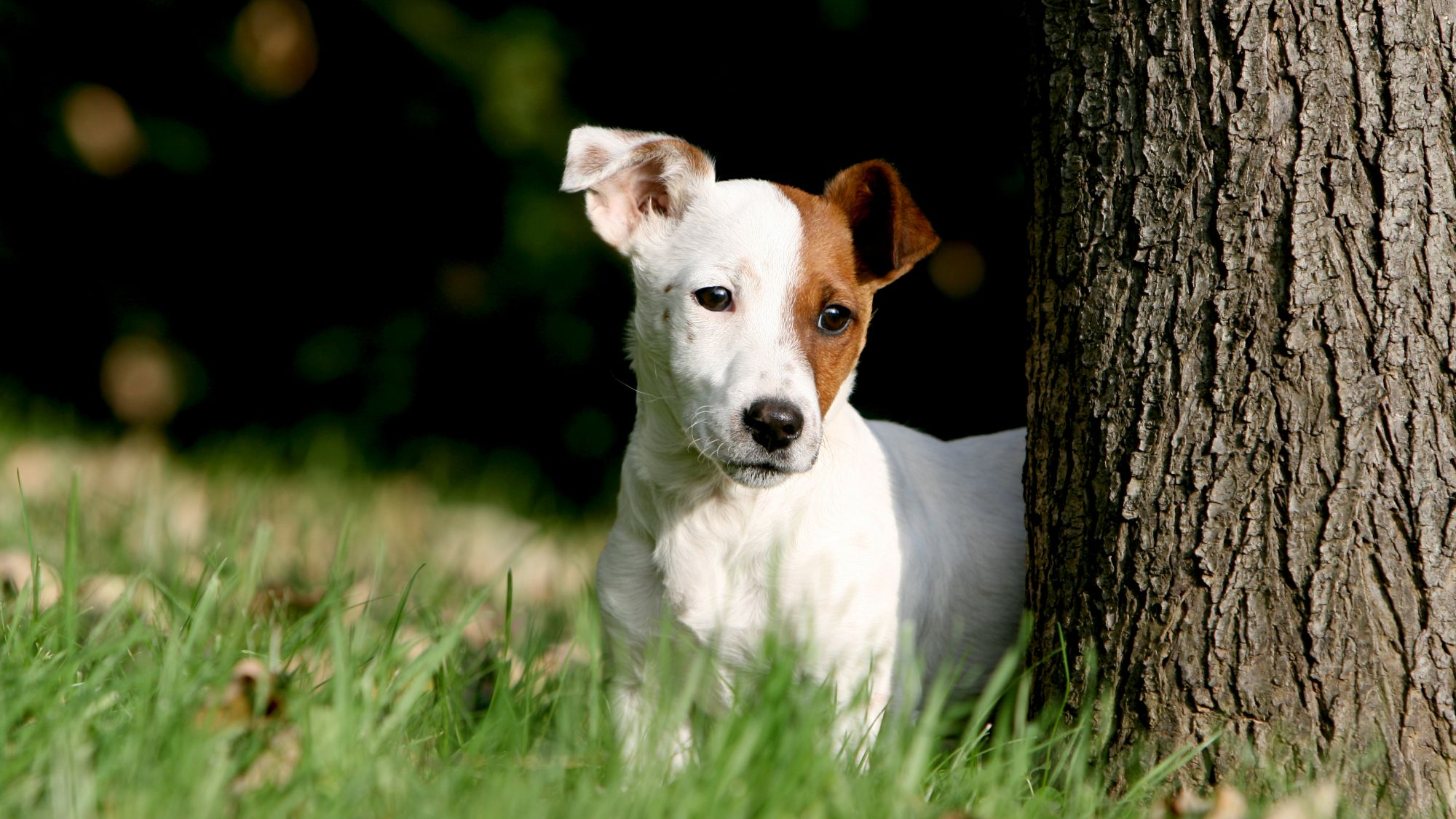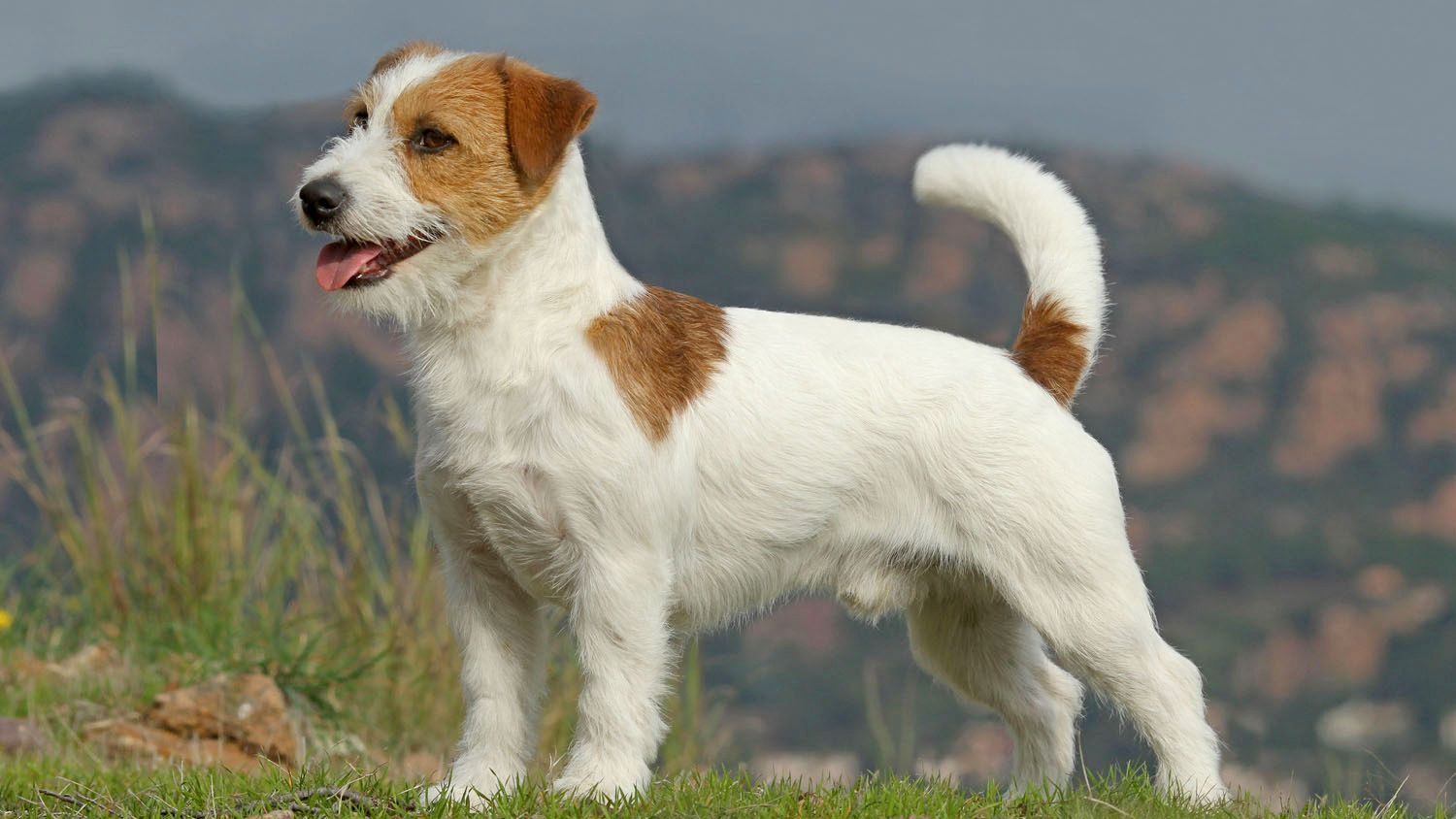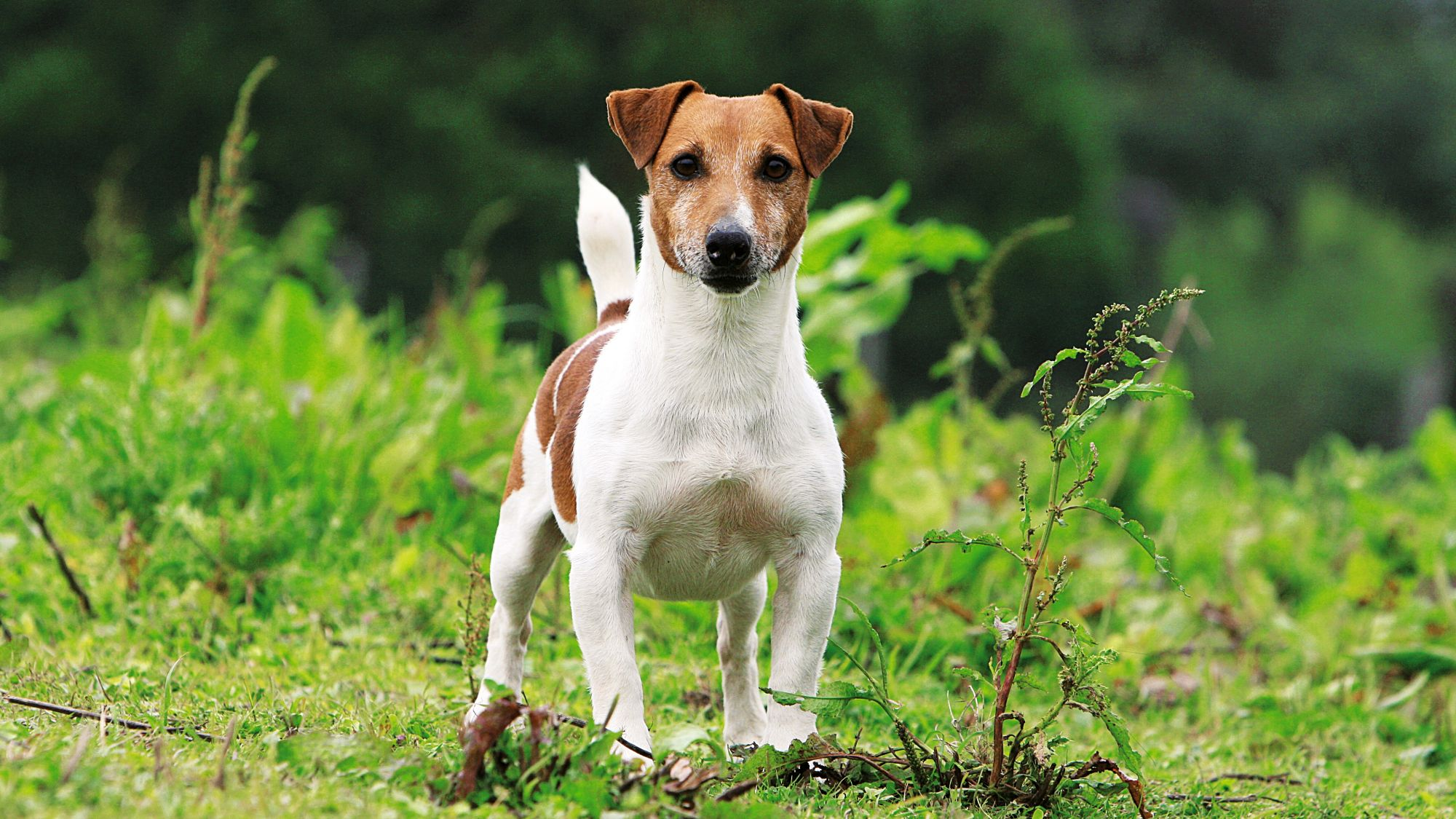Let's talk Jack Russell Terriers
Official name: Jack Russell Terrier
Other names: Jack Russell
Origins: England
Drooling tendencies
1 out of 5Shedding Level
2 out of 5Energy level
5 out of 5Compatibility with other pets
5 out of 5Warm weather?
2 out of 5Suited to apartment living
3 out of 5Family pet
4 out of 5Can stay alone
1 out of 5
| Male | Female |
|---|---|
| Height | Height |
| 25 - 30 cm | 25 - 30 cm |
| Weight | Weight |
| 5 - 6 kg | 5 - 6 kg |
| Life Stage | |
|---|---|
| Puppy | Adult |
| 2 to 10 months | 10 months to 8 years |
| Mature | Senior |
| 8 to 12 years | From 12 years |
| Baby | |
| Birth to 2 months | |
Drooling tendencies
1 out of 5Shedding Level
2 out of 5Energy level
5 out of 5Compatibility with other pets
5 out of 5Warm weather?
2 out of 5Suited to apartment living
3 out of 5Family pet
4 out of 5Can stay alone
1 out of 5
| Male | Female |
|---|---|
| Height | Height |
| 25 - 30 cm | 25 - 30 cm |
| Weight | Weight |
| 5 - 6 kg | 5 - 6 kg |
| Life Stage | |
|---|---|
| Puppy | Adult |
| 2 to 10 months | 10 months to 8 years |
| Mature | Senior |
| 8 to 12 years | From 12 years |
| Baby | |
| Birth to 2 months | |

Get to know the Jack Russell Terrier
All you need to know about the breed
There is nothing quite like that Jack Russell Terrier attitude. It is perfectly encapsulated by the expression “Big dog energy”. It just happens to be housed in a little dog’s body.
With all the boldness, exuberance and yes, energy, of a far larger animal, the Jack Russell Terrier struts through life with a lively joy. Loyal and devoted, they will be more than pleased to have you along for the ride.
While Jack Russell Terriers can make great family pets, especially when socialized as puppies, they are known to be a bit “nippy” and as such are best suited to families with slightly older children able to understand how to behave around dogs. A Jack Russell isn’t a good fit with toddlers or very young children.
Originally bred to accompany hunters, the Jack Russell still has the stamina and temperament that are part and parcel of a working dog’s personality, including the high prey drive for which they were prized. You might be less enthused to discover your Jack Russell Terrier taking off after anything that moves so keeping them on a leash when out and about is always a good idea.
Two things to note about the breed: In spite of their small size, they do need a lot of exercise – you will likely tire long before they do – and mental stimulation. And they really don’t take well to being left alone. The breed’s separation anxiety can actually affect their overall health. Luckily, with that early socialization and training – perhaps with a professional familiar with the Jack Russell Terrier’s particular brand of smarts – they will be more than ready to accompany you as you go about your day.

Two facts about Jack Russell Terriers
1. Did you say something?
It has been said that the Jack Russell Terrier likes the sound of his own voice. Perhaps a kind way of saying that the breed can be a bit barky. Excitable by nature, they will not hesitate to let you know if they are upset. Or content. Or hear something. You get the idea. Calm, but firm training can help get this tendency in check early.
2. How much exercise exactly?
They may be small, but this feisty, lively breed needs to expend their considerable energy every day. A walk around the block twice a day is not going to cut it. Think one hour of exercise a day minimum for your Jack Russell Terrier. Off-leash time nourishes their independent spirit – just make sure they are in a well-enclosed space. As a true terrier, if they can dig their way out, they will escape!
History of the breed
Originating in England sometime in the mid-to-late 1800s, the Jack Russell Terrier was bred by the Reverend John Russell - funnily enough, not the John Russell Terrier - to accompany the good reverend on his beloved fox hunts. Mostly white so as not to be confused with the animals being pursued, they were low to the ground to be close to their quarry, fast enough to keep up with the hunt and plenty wriggly to follow foxes down narrow burrows to flush them out. And they were noisy enough to sound the alarm for all to hear when they’d found something, never harming their prey in the process.
In any event, these hardy terriers were bred to do a job and, while current Jack Russells are unlikely to be traceable to the parson’s originals, the breed is still driven to work, a fact that surprises nobody considering the breed’s high energy reserves and prey drive. Now a popular companion animal, sprightly Jack Russell Terriers still require room to explore and their smart minds occupied.
No reason to bore you with all the to, fro, and discussion around the breed’s official recognition. Suffice it to say that they were finally recognized by the AKC in 2001, with their name changed to Parson Russell Terrier. The Jack Russell Terrier Breeders Association followed suite, becoming the Parson Russell Terrier Association of America. Interestingly, the Australian National Kennel Council (ANKC) and the New Zealand Kennel Club (NZCK) are among kennel associations that register both the Jack Russell Terrier and the Parson Russell Terrier as different breeds.
From head to tail
Physical characteristics of Jack Russell Terriers
1.Eyes
2.Nose
3.Skull
4.Body
5.Tail

Things to look out for
From specific breed traits to a general health overview, here are some interesting facts about your Jack Russell Terrier
A skip and a jump
A pretty healthy breed overall, Jack Russell Terriers can be prone to a few select joint problems – all that constant movement might be to blame – from hereditary Legg-Calve-Perthes (LCP) disease, which can be corrected surgically, to, most commonly, luxating patellas. Basically, their knee-caps can move out of position. You can spot symptoms of the latter early, including limping, skipping and a sitting position that seems as though they are compensating. A good vetinarian can help you decide if your pooch needs surgery or not.
Yawn… the breed bores easily
While training the Jack Russell Terrier can be a relatively easy endeavour thanks to the breed’s inherent smarts, they are known to get bored rather quickly and lose interest. Not good for training! So on you to keep those sessions entertaining, changing up here and there to make sure your Jack Russell Terrier stays engaged. If you do, they will learn fast and the training will stick. They were bred as a working dog after all.
Caring for your Jack Russell Terrier
Grooming, training, and exercise tips
7/7
All about Jack Russell Terriers
One of the most popular breeds worldwide, Jack Russell Terriers are lively, fun, smart and thoroughly entertaining. These small dogs with big personalities are, however, not for everyone. They need lots of exercise, mental stimulation, a decent amount of attention – this is not a breed that can be left alone much – and early training and socialization. Gather all the pros and cons and see if you think the breed is right for you.
Do birds fly? Bred to hunt and burrow into holes, the Jack Russell Terrier has a strong prey drive and a very keen sense of smell – while they might be digging out of boredom or, let’s be honest, because it’s fun, they might also be picking up the scent of something scurrying around underground. Training can help offset the trait, but not entirely.
Tailored nutrition for your Jack Russell Terrier
Read more on this topic
Sources
- Veterinary Centers of America https://vcahospitals.com/
- Royal Canin Dog Encyclopaedia. Ed 2010 and 2020
- Banfield Pet Hospital https://www.banfield.com/
- Royal Canin BHN Product Book
- American Kennel Club https://www.akc.org/
Like & share this page